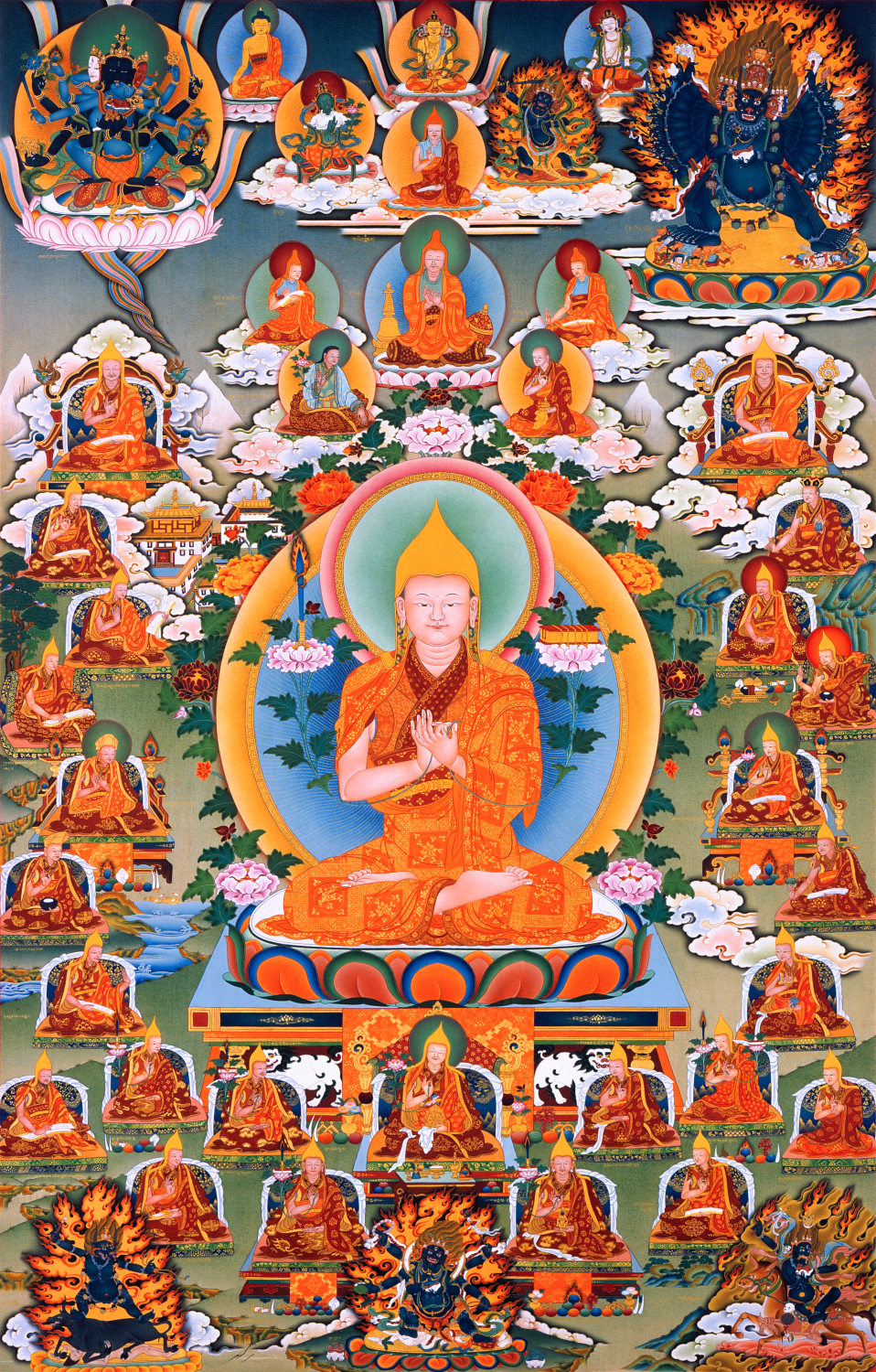Well... after the Meditation on Death, you may feel a bit like this:
And you run and you run / To catch up with the sun / But it's sinking
Racing around / To come up behind you again
The sun is the same / In a relative way / But you're older
Shorter of breath / And one day closer to death
-- Pink Floyd, "Time", Dark Side of the Moon (1973)
Racing around / To come up behind you again
The sun is the same / In a relative way / But you're older
Shorter of breath / And one day closer to death
-- Pink Floyd, "Time", Dark Side of the Moon (1973)
To overcome this sort of despair in the face of death, we must recollect that the purpose of this meditation is not to depress us, but to encourage us to learn and practice Dharma:
Precious human life, gained but once,
Has great potential but is easily lost.
Inspire me to remember this constantly
And to think day and night of taking its essence.
-- The Foundation of All Perfections, Verse 2
Has great potential but is easily lost.
Inspire me to remember this constantly
And to think day and night of taking its essence.
-- The Foundation of All Perfections, Verse 2
In the Maranassati Sutta (see below) the Tathagata gives us a practical method for using the thought of death to help us "think day and night of taking its essence." This will give us a strong practical basis for faith in the Four Assurances, to say with Geshe Chekawa, "Now if I die, I have no regrets."
A similar practice of Morning and Evening Prayer can help Christians to develop the confidence of which the Apostle Paul speaks:
...For I am convinced
that neither death, nor life,
nor angels, nor rulers,
nor things present, nor things to come,
nor powers, nor height, nor depth,
nor anything else in all creation,
will be able to separate us
from the love of God in Christ Jesus our Lord.
-- Romans 8:38-39
that neither death, nor life,
nor angels, nor rulers,
nor things present, nor things to come,
nor powers, nor height, nor depth,
nor anything else in all creation,
will be able to separate us
from the love of God in Christ Jesus our Lord.
-- Romans 8:38-39
I have heard that at one time the Blessed One was staying at Nadika, in the Brick Hall. There he addressed the monks, "Monks, mindfulness of death — when developed & pursued — is of great fruit & great benefit. It gains a footing in the Deathless, has the Deathless as its final end. And how is mindfulness of death developed & pursued so that it is of great fruit & great benefit, gains a footing in the Deathless, and has the Deathless as its final end?
"There is the case where a monk, as day departs and night returns, reflects: 'Many are the [possible] causes of my death. A snake might bite me, a scorpion might sting me, a centipede might bite me.... That would be how my death would come about. That would be an obstruction for me.' Then the monk should investigate: 'Are there any evil, unskillful mental qualities unabandoned by me that would be an obstruction for me were I to die in the night?' If, on reflecting, he realizes that there are evil, unskillful mental qualities unabandoned by him that would be an obstruction for him were he to die in the night, then he should put forth extra desire, effort, diligence, endeavor, undivided mindfulness, & alertness for the abandoning of those very same evil, unskillful qualities.... But if, on reflecting, he realizes that there are no evil, unskillful mental qualities unabandoned by him that would be an obstruction for him were he to die in the night, then for that very reason he should dwell in joy & rapture, training himself day & night in skillful qualities.
"Further, there is the case where a monk, as night departs and day returns, reflects: 'Many are the [possible] causes of my death.... Are there any evil, unskillful mental qualities unabandoned by me that would be an obstruction for me were I to die during the day?' If, on reflecting, he realizes that there are evil, unskillful mental qualities unabandoned by him that would be an obstruction for him were he to die during the day, then he should put forth extra desire, effort, diligence, endeavor, undivided mindfulness, & alertness for the abandoning of those very same evil, unskillful qualities.... But if, on reflecting, he realizes that there are no evil, unskillful mental qualities unabandoned by him that would be an obstruction for him were he to die during the day, then for that very reason he should dwell in joy & rapture, training himself day & night in skillful qualities.
"This, monks, is how mindfulness of death is developed & pursued so that it is of great fruit & great benefit, gains a footing in the Deathless, and has the Deathless as its final end."
That is what the Blessed One said. Gratified, the monks delighted in the Blessed One's words.
"Maranassati Sutta: Mindfulness of Death (2)" (AN 6.20).
Translated from the Pali by Thanissaro Bhikkhu.
Access to Insight, 30 November 2013
Translated from the Pali by Thanissaro Bhikkhu.
Access to Insight, 30 November 2013
